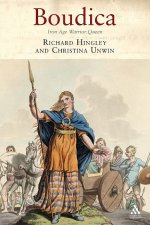- Joined
- Feb 2, 2011
- Messages
- 2,093
JJDESIGNS NEWS UPDATE 24[SUP]th[/SUP] JANUARY 2022
THE ARMIES AND ENEMIES OF ANCIENT ROME
BOADICCA’S REBELLION AD 60-61
The concept sketch for the Boadicca figure was one of the drawings previewed in December as part of last years advent calendar posted on the JJD Collectors Facebook Group.
A special thanks once again to Mike Estell.

Boadicca, or Buddug in Welsh, was a queen of the British Iceni tribe who led an uprising against the conquering forces of the Roman Empire in AD 60/61.
According to Roman sources, shortly after the uprising failed, she poisoned herself or died of her wounds, although there is no actual evidence of her fate. She is considered a British folk hero.

Boudicca’s husband Prasutagus, with whom she had two children whose names are unknown, ruled as a nominally independent ally of Rome, and left his kingdom jointly to his daughters and to the Roman emperor in his will. However when he died his will was ignored, and the kingdom was annexed and his property taken. According to Tacitus, Boudicca was flogged and her daughters raped.
Cassius Dio explains Boudicca’s response by saying that previous imperial donations to influential Britons were confiscated and the Roman financier and philosopher Seneca called in the loans he had forced on the reluctant Celtic Britons.
In AD 60 or 61, when the Roman governor Gaius Suetonius Paulinus was campaigning on the island of Mona (modern Anglesey) on the northwest coast of Wales, Boudicca led the Iceni, the Trinovantes, and other tribes in revolt. They destroyed Camulodunum (modern Colchester), earlier the capital of the Trinovantes, but at that time a settlement for discharged Roman soldiers and site of a temple to the Emperor Claudius.
Upon hearing of the revolt, Suetonius hurried to Londinium. The 20 year old commercial settlement was the rebels’ next target. Lacking sufficient numbers to defend the settlement, he evacuated and abandoned Londinium.
Boudicca led a very large army of Iceni, Trinovantes, and others against a detachment of the Legio IX Hispana, defeating them, and burning Londinium and Verulamium.

An estimated 70,000 – 80,000 Romans and Britons were killed in the three cities by those following Boudicca, many by torture. Suetonius, meanwhile regrouped his forces, and despite being heavily outnumbered, he decisively defeated the Britons. The crisis caused Nero to consider withdrawing all Roman forces from Britain, but Suetonius’s victory over Boudicca confirmed Roman control of the province.
Boudicca then either killed herself to avoid capture or died of illness.

Interest in these events was revived in the English Renaissance and led to Boudicca’s fame in the Victorian era. Boudicca has remained an important cultural symbol in the United Kingdom.
The Boudicca figure and chariot will be available later this summer.
Best wishes and many thanks
john jenkins
THE ARMIES AND ENEMIES OF ANCIENT ROME
BOADICCA’S REBELLION AD 60-61
The concept sketch for the Boadicca figure was one of the drawings previewed in December as part of last years advent calendar posted on the JJD Collectors Facebook Group.
A special thanks once again to Mike Estell.

Boadicca, or Buddug in Welsh, was a queen of the British Iceni tribe who led an uprising against the conquering forces of the Roman Empire in AD 60/61.
According to Roman sources, shortly after the uprising failed, she poisoned herself or died of her wounds, although there is no actual evidence of her fate. She is considered a British folk hero.

Boudicca’s husband Prasutagus, with whom she had two children whose names are unknown, ruled as a nominally independent ally of Rome, and left his kingdom jointly to his daughters and to the Roman emperor in his will. However when he died his will was ignored, and the kingdom was annexed and his property taken. According to Tacitus, Boudicca was flogged and her daughters raped.
Cassius Dio explains Boudicca’s response by saying that previous imperial donations to influential Britons were confiscated and the Roman financier and philosopher Seneca called in the loans he had forced on the reluctant Celtic Britons.
In AD 60 or 61, when the Roman governor Gaius Suetonius Paulinus was campaigning on the island of Mona (modern Anglesey) on the northwest coast of Wales, Boudicca led the Iceni, the Trinovantes, and other tribes in revolt. They destroyed Camulodunum (modern Colchester), earlier the capital of the Trinovantes, but at that time a settlement for discharged Roman soldiers and site of a temple to the Emperor Claudius.
Upon hearing of the revolt, Suetonius hurried to Londinium. The 20 year old commercial settlement was the rebels’ next target. Lacking sufficient numbers to defend the settlement, he evacuated and abandoned Londinium.
Boudicca led a very large army of Iceni, Trinovantes, and others against a detachment of the Legio IX Hispana, defeating them, and burning Londinium and Verulamium.

An estimated 70,000 – 80,000 Romans and Britons were killed in the three cities by those following Boudicca, many by torture. Suetonius, meanwhile regrouped his forces, and despite being heavily outnumbered, he decisively defeated the Britons. The crisis caused Nero to consider withdrawing all Roman forces from Britain, but Suetonius’s victory over Boudicca confirmed Roman control of the province.
Boudicca then either killed herself to avoid capture or died of illness.

Interest in these events was revived in the English Renaissance and led to Boudicca’s fame in the Victorian era. Boudicca has remained an important cultural symbol in the United Kingdom.
The Boudicca figure and chariot will be available later this summer.
Best wishes and many thanks
john jenkins


